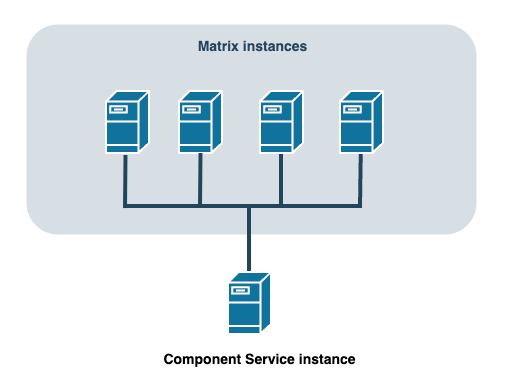Considerations for setting up Component Service instances
There are some configuration considerations that can simplify how you manage your Component Service instances across DXP organizations.
Relationships between the Component Service and Squiz Content Management Service instances
One Component Service instance can be shared across multiple Squiz Content Management Service instances within an organization.

However, you can not have more than one Component Service associated with a single Squiz Content Management Service instance.
If your organization has several Squiz Content Management Service systems, it makes sense to configure one Component Service instance across all of your systems. Taking this configuration approach makes it easy to reuse your component libraries across potentially hundreds of Squiz Content Management Service sites.
Federated organizations with many sub-organizations
A federated organization is a business structure often found in large government organizations or large corporations. This type of organizational structure typically consists of separate business units or agencies.
If your organization is a federated organization, you might have experienced a situation where agencies, or business units need to move between departments. Another common scenario is Machinery of Government (MOG) changes that move different government agencies between departments.
If you have a single Component Service that services multiple Squiz Content Management Service instances for a number of agencies or business units, it may be difficult to manage Component Service instances between agencies or business units. This is particularly relevant if sub-organizations are likely to move between organizations.
In this case, it is best to have an independent Component Service instance for those systems or groups of systems, so they can be more readily moved.
